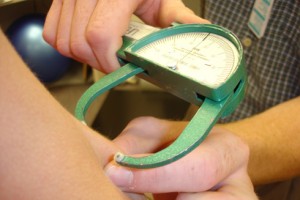Stanford Ortho 22
/Here is the problem for you my dear readers. What hypothesis about Taijiquan can be tested with this equipment? Can you propose a better test, or a more relevant hypothesis? What other questions does this inquiry raise? What evidence would disprove their hypothesis?
I'll get you started:

--Can this much force be generated by this much mass using another method?
--Is his force easier to inhibit at certain locations? Or is his force continuous despite the fact that his speed is changing?
--If he carries a weight in the non-striking hand will it increase his force in the striking hand? (Fluid dynamics hypothesis).
--Does this sort of power require uniformity of muscle relaxation/tension? Can it be inhibited by electrically stimulating a random muscle while he is in motion? Can we get some sensors on a range of muscle groups to see to what degree they are "firing" and in what order?
Note: I am available for scientific evaluation.

